For three ‘Winning over’ Tiger Beer spots, Oktobor created fully CG architectural icons of London, New York and Paris as a single drop of beer gives rise to the cities that eventually form into the Tiger bottle shape. Oktobor General Manager Patrick McAteer and director Damon Duncan tell fxguide how the spots were accomplished.
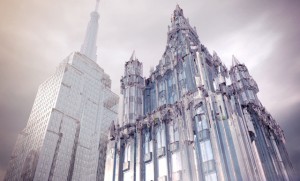 fxg: What led to Oktobor working on these commercials?
fxg: What led to Oktobor working on these commercials?
McAteer: We’ve had quite a presence in South-East Asia recently, in particular Singapore in the last seven years. In fact, we finished the last three Singapore Airlines campaigns. We’ve worked out of Singapore on Nokia campaigns, so the brand Oktobor’s got quite a bit of visibility in that part of the world. We were asked to respond to a brief from Saatchi and Saatchi Worldwide Sdn Bhd. When an agency like Saatchi asks for a creative solution for one of their leading brands, they tend to throw the net to very targeted companies that can deliver high end VFX. In this case it was certainly high end 3D animation. The work that Damon has done as a 3D director and a director generally was a really good hook to allow us to get a look at the boards.
Duncan: They came to us with a reasonably strong concept to begin with, and it was a real execution piece. They had the initial ideas which revolved around targeting some large markets in terms of using these iconic cities as start-off points to show that Tiger was an international product. So we were obviously dealing with New York, London and Paris, and they wanted to have these individual ‘feels’ while the commercials worked as a combined campaign. So they were looking for specific materials to grow each of these cities into the shape of a Tiger beer bottle. That was the concept, and what we needed to do was extrapolate that concept visually.
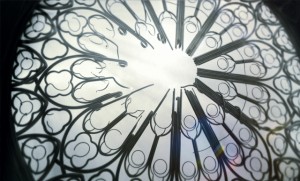 fxg: Did you undertake some initial tests?
fxg: Did you undertake some initial tests?
Duncan: Definitely. It was quite an architectural piece, so we spent some time with a storyboard artist to work out our angles, our lensing and our composition. That really helped us set out a nice edit and nice compositional feel. All the while we were testing out the animation to do things like get bricks moving at the right rate and scale and what we’d have to do with the wires for Paris. So we did that in conjunction with the storyboarding to work out the timing and pacing of the commercial.
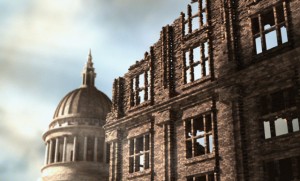 fxg: Let’s talk firstly about the London spot. How did you make the bricks move in that way?
fxg: Let’s talk firstly about the London spot. How did you make the bricks move in that way?
Duncan: That was all particle driven. For these commercials we used 3ds Max. We’ve got a dual pipeline here at Oktobor with Max and Maya. We also used Particle Flow, which has a massive back-end scripting ability. Our technical director, Rhys Dippie, scripted out controllers we could use for animating the bricks. Obviously there’s at times thousands and thousands of bricks in the scene. We worked with another plug-in developer to be able to instance multiple simulations in one scene. It was actually a very simple animation for the bricks. They were transferring up over a certain number of frames. And they were rotating up to 180 degrees and they were scaling from zero to one. Once you put multiple actions of that in one scene it has quite a magical effect.
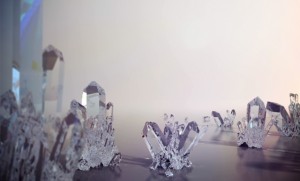 fxg: For the New York spot, you grew crystals. What kind of work was involved in getting the right lighting to work for that spot?
fxg: For the New York spot, you grew crystals. What kind of work was involved in getting the right lighting to work for that spot?
Duncan: Well, when you see any hero photography of jewels or jewelry, it’s often shot against black velvet or a very dark background. That enables you to really control your reflections. So for us, having an almost see-through crystal that refracts and reflects its environment was actually quite tricky to handle. We had to work at how and what our crystals were refracting and reflecting to make sure they sat in the scene, but we also had to keep the right contrast in them. There was some pretty heavy ray-tracing and render times on those. We used the Brazil renderer, which was great. It was really fast and we have a lot of control over the GI renders even with a lot of bounces.
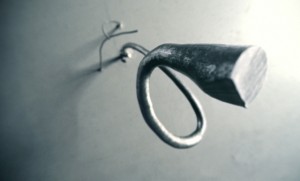 fxg: Finally, the growing wire in the Paris spot seems to have a real organic feel. How did you achieve that?
fxg: Finally, the growing wire in the Paris spot seems to have a real organic feel. How did you achieve that?
Duncan: That’s actually mostly just hand-animated. Craig Speakman, who was animating the wires, used a lot free-from deformers, so there were multiple levels of animation going on. For example, for the fence shot he animated a growing path and there are lots of organic elements in there. Then he’d use these free-form deformers over the top of entire animated pieces and then do secondary animation as well. So not only was the wire growing, there was a secondary life to it. As soon as we added that, everything seemed to come alive and it had a really lovely self-directed feel to it. But a lot of it is just pure grunt work hand animating multiple wires.
fxg: I think part of the appeal of these spots is that they have a very cinematic feel to them. Can you talk about how you gave them that look?
Duncan: Right from the outside, we used a great storyboard artist from New Zealand called Stephen Ellis. He’s been with us for a long time and has a very ‘lens’ eye. We were discussing the icons and landmarks to be used for each city and we spent a lot of time getting the right angles, looking at photographs and making sure the lensing, even though we were in a magical world, was basically correct for that city.
We did a lot of initial camera movement and then went and shot our own DV camera reference. That gave us a lot of naturalistic flow. We re-tracked a few things we had in archive like crane moves and real dolly moves. A lot of the time, 3D camera moves can look very floaty without the right weight, so it really helped us to have those real-world camera moves tracked in there. Then we also had some lighting work done in Flame after the fact to add volume and make sure we had strong source.
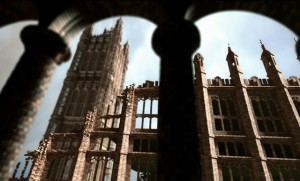 fxg: They all end with the clever product shot reveal of the bottle. How was this tied into the production?
fxg: They all end with the clever product shot reveal of the bottle. How was this tied into the production?
McAteer: The whole theme of the ads is ‘Winning over’, as in Tiger Beer wins over New York etc. I think that’s actually a really good title for these. I love that a drop of the beer turns into the cities and represents the bottle at the end. Damon, you and I talked about that in terms of Tiger Beer ‘winning over’ the city instead of just a product, didn’t we?
Duncan: Yeah, totally. And one of the challenges of the spots was to see quite a lot of the bottle actually forming. So to get the scale and to focus on the reveal at the end was challenging because we had to create a real cinematic feel to get there.
fxg: It sounds like you had a fair amount of creative control on the spots.
McAteer: Yes, from a production perspective it was really important that we were able to gain the confidence of the agency up front to actually handle all of the elements. This also included partnering with Liquid Studios to do the audio. It was pretty big shift for the agency. Even with technology, the tyranny of distance is there and it requires a lot of trust to do. Hats off to Damon and everyone else at Oktobor to keep control of all the required elements for these spots.
That’s really key for the agency. The product shot was the most important thing in that way. Often fantastic looking ads can lose brand message because they are just really good looking ads. We were able to achieve a really good brand that would resonate good continuity for Tiger. For them to be able to see that that was part of the creative solve for us, was being able to highlight the bottle and brand at the end.
Credit Roll
Client: Asia Pacific Breweries (Tiger Beer)
Agency: Saatchi and Saatchi Worldwide Sdn Bhd
Oktobor:
Damon Duncan – Director
Amanda Chambers – Producer
Rhys Dippie – Technical Director
Craig Speakman – Animator
Laksman Anandanayagam – Flame
